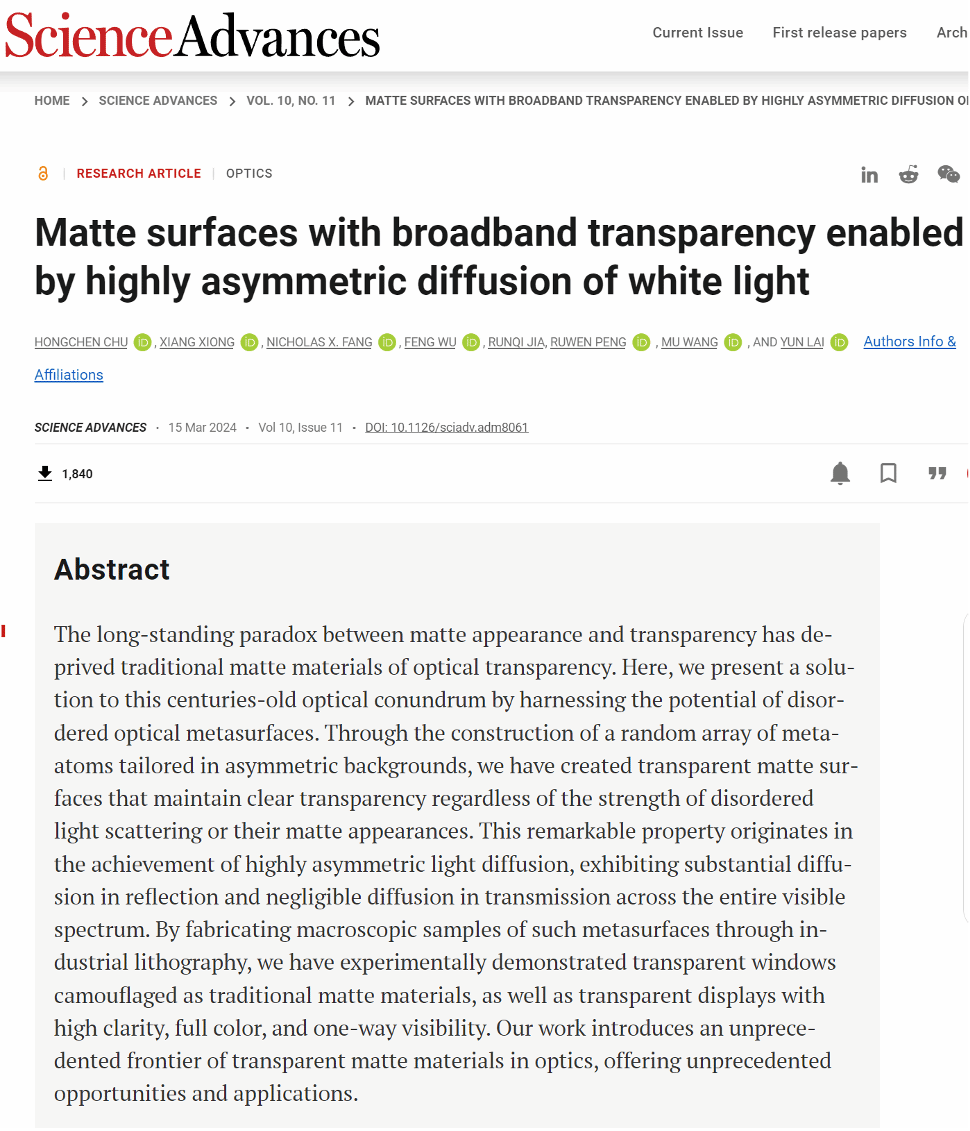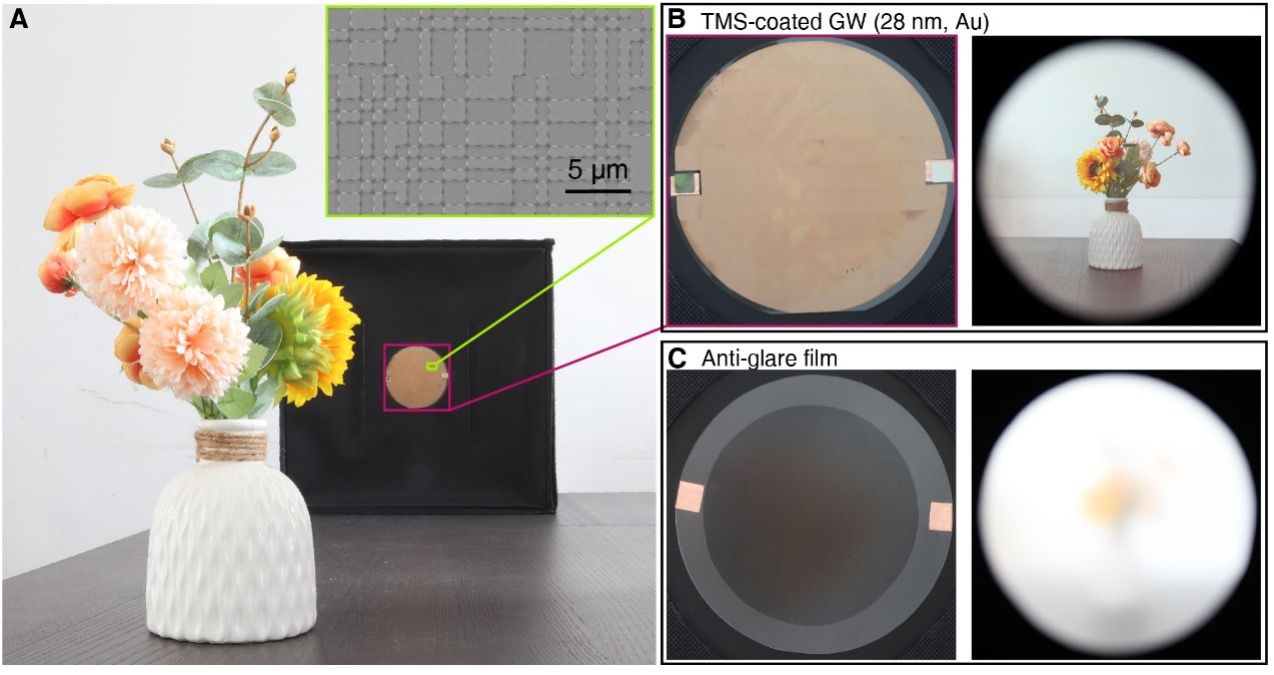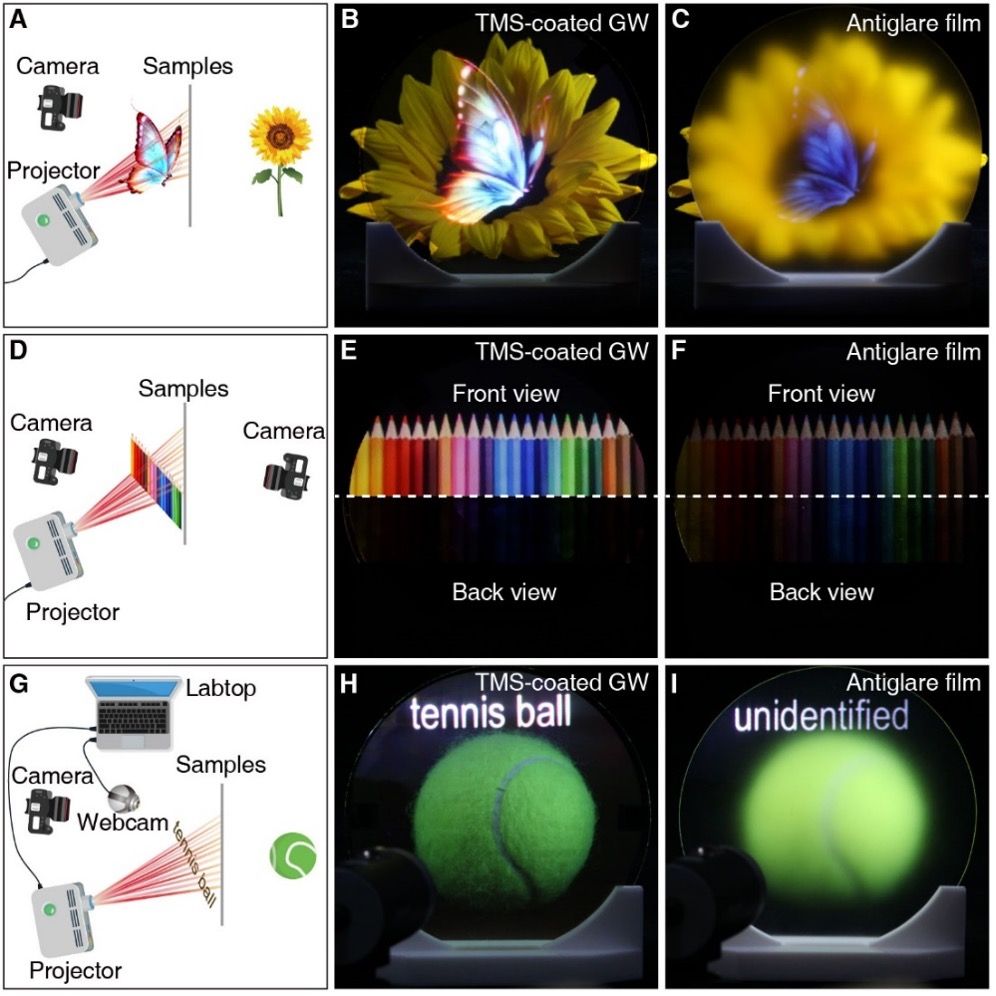Imagine a car that appears to have no windows from the outside, but the driver inside can see the outside world without any hindrance; or a house surrounded by walls on all sides, but when someone inside looks out, the walls seem to be transparent glass, allowing an unobstructed view of the scenery outside. To achieve such futuristic scenes, a special optical material is needed that not only has a matte appearance similar to rough objects but also maintains perfect transparency. However, such a material does not exist in traditional optical materials. For example, homogeneous glass with a smooth surface is transparent but also comes with reflections and glare. Roughening the surface of the glass can eliminate reflections and glare, achieving a matte appearance. However, its transparency will be greatly reduced, causing the transmitted image to become blurred, turning transparent glass into frosted glass. Traditional optical methods of generating diffuse scattering, whether through rough surfaces or disordered media, inevitably compromise the transparency of the system. Therefore, transparency and matte appearance form a pair of conflicting optical properties, a problem that has remained unsolved since ancient times.
Recently, a collaborative team led by Professors Yun Lai, Ruwen Peng, and Mu Wang from Nanjing University has made innovative breakthroughs in resolving the above long-standing issue. For the first time, they utilized mature industrial-grade step-and-repeat lithography technology to fabricate macroscopic metasurfaces on glass surfaces with perfect diffuse reflection functionality and high transparency across the entire visible light spectrum (400-800 nanometers), with a diameter of 10 centimeters. These metasurfaces are called "transparent matte surfaces (TMSs)." Glass with such surfaces can maintain perfect transparency throughout the entire visible light spectrum while exhibiting a matte appearance similar to rough objects (specular reflectance ~1%, only a few tens of percent of the total reflectance, lower than the specular reflectance of ordinary glass surface ~4%). These novel optical materials have broad prospects in fields such as camouflage, imaging, and displays, and are expected to enable a range of unprecedented new applications, including making windows "disappear" (camouflaged as opaque materials) and turning glass into high-definition transparent displays with one-sided viewing. These discoveries, titled "Matte surfaces with broadband transparency enabled by highly asymmetric diffusion of white light," were published in the international prestigious journal Science Advances on March 15, 2024 [Science Advances 10, eadm8061 (2024), https://www.science.org/doi/10.1126/sciadv.adm8061]


Figure 1. Camouflaged window based on transparent matte surface.
Figure 1 intuitively demonstrates a comparison experiment. Figure 1A shows the experimental setup. We placed a mini photo studio with a hole on the table, with the transparent matte surface sample positioned at the hole. In front of the table, a white vase and colorful flowers were placed as scenery to verify the sample's reflection and transmission effects. Figure 1B, left, displays a photo of the sample taken from the outside, showing minimal specular reflection or glare, resembling a gold plate with matte characteristics. Figure 1B, right, shows the photo taken from inside the studio through the sample, clearly revealing the details of the vase and colorful flowers, confirming the high transparency and clarity of the sample. As a comparison, if an anti-glare film replaces the transparent matte surface, although it similarly eliminates specular reflection or glare (Figure 1C, left), its transparency is significantly reduced. Images taken through it from inside the studio are highly blurred (Figure 1C, right), making it difficult to discern. Therefore, a major advantage of the transparent matte surface over an anti-glare film is its ability to clearly see objects behind it regardless of distance, making it suitable for use as a window. Additionally, its diffuse reflection characteristic gives it an appearance similar to opaque materials when viewed from the outside, achieving an interesting camouflage or "disappearing" of the window.

Figure 2. High-definition transparent display based on transparent matte surface.
Transparent display refers to a display screen that is transparent, allowing dynamic images to be projected onto transparent glass, which is expected to become the basis for next-generation technologies such as automotive displays, storefront displays, and augmented reality. Figure 2 illustrates a new transparent display scheme based on a transparent matte surface. The diffuse reflection of the transparent matte surface functions similarly to a movie screen, allowing dynamic images to be displayed through projection. Combining projection display with high transparency achieves transparent display. Figure 2A shows the experimental setup. A sunflower is placed behind the sample, and a colorful butterfly is projected onto the sample from the front side, while being captured by a camera on the same side. Figure 2B presents the photos taken with the transparent matte surface sample. Clearly, both the projected butterfly and the sunflower behind the sample are very clear. As a comparison, if an anti-glare film is used instead of the transparent matte surface (Figure 2C), the butterfly appears noticeably dimmer, and the sunflower becomes very blurry. The dimming of the butterfly is due to the reduced diffuse reflection of the anti-glare film, while the blurriness of the sunflower is caused by the decreased transparency due to random scattering. Interestingly, the projection display on the transparent matte surface exhibits a one-sided feature. Figure 2E shows photos taken from the front and back sides when projecting a row of colored pencils, with the pencils appearing very clear on the front side while being almost indiscernible on the back side. This verifies that the light scattering of the transparent matte surface only exists on the front side, demonstrating extreme asymmetry. As a comparison, when using an anti-glare film (Figure 2F), the brightness of the pencil images captured from the front and back sides is similar, indicating that the light scattering in the anti-glare film exists on both sides. Finally, we demonstrate augmented reality based on this transparent display technology. The camera captures images of objects behind the transparent matte surface, and the image recognition system identifies the objects and projects their names onto the transparent matte surface dynamically (Figure 2H). As a comparison, the low transparency of the anti-glare film prevents the image recognition system from identifying objects (Figure 2I).
In summary, the transparent matte surface combines the functionalities of clear transmission imaging and perfect diffuse reflection across the entire visible light spectrum, thus achieving a special type of optical material. It addresses the classic challenge in optics of reconciling transparency with matte appearance. The transparent matte surface technology has vast potential applications. For instance, by eliminating specular reflections and glare from transparent glass surfaces through diffuse reflection, it has the potential to significantly reduce urban light pollution and improve daily life experiences. Transparent windows with a matte appearance can offer more flexibility in designing the appearance of vehicles and buildings, realizing science fiction scenarios of "windowless" yet transparent perspectives. Camouflage imaging can provide surveillance devices with the ability to become "invisible." Additionally, when combined with projection technology, it could enable large-scale dynamic high-definition transparent displays at a lower cost, driving the development of technologies such as automotive displays, storefront displays, and augmented reality.
For details, pls. see the paper https://www.science.org/doi/10.1126/sciadv.adm8061
Source: Office of Innovation, Entrepreneurship, and Technology Transfer
School of Physics
Correspndent: Lai Yun